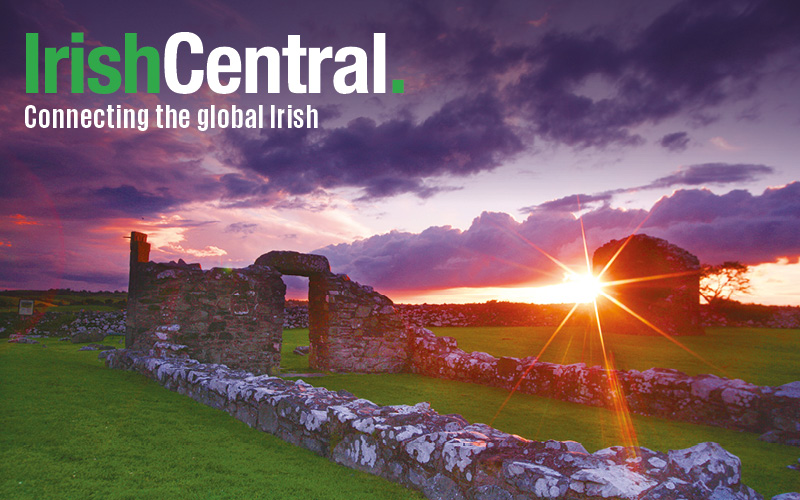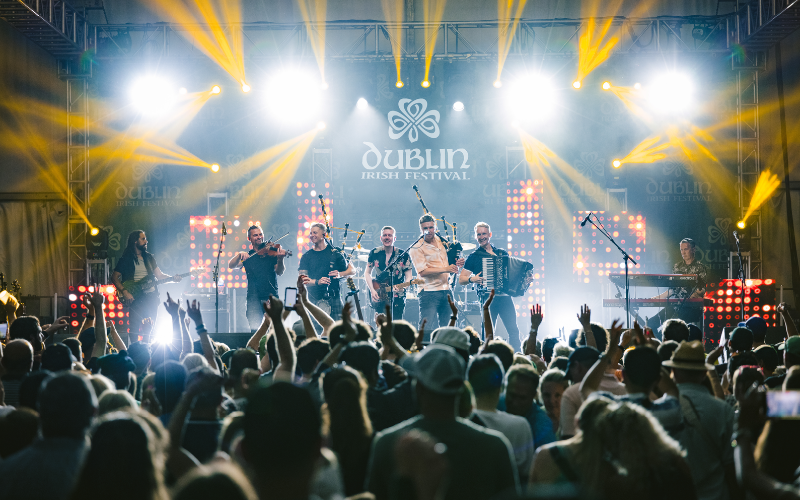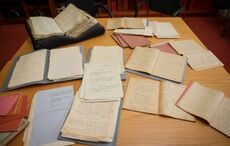The remarkable story of how Douglas Hyde saved San Francisco.
In 1893, Douglas Hyde had helped found the Gaelic League to encourage the preservation of Irish culture, music, dance, and language of Irish nationalism.
Now, ten years after its founding, the League was being smothered by its own success, with hundreds of branches formed in Ireland and as far away as San Francisco.
Only $500 remained in the treasury to administer this empire.
The phenomenally well-organized New York attorney, John Quinn, now organizes a fundraising tour for Douglas Hyde.
The Old Country gave Hyde and his wife a grand send-off, for with the Gaelic League he had reunited the country after the divisive fall of Parnell.
In Cork, hurlers with sticks marched on either side of the Hydes, the Stars and Stripes flew along with the Harp, witnessed by a young Sean O’Casey.
Read more: Singer Liam Ó Maonlaí to launch Douglas Hyde Foundation in New York

Douglas Hyde.
All goes well in the States, starting at Harvard, then Yale. Boston proves wild with enthusiasm, subscriptions by the newspapers bringing in money for the League.
Hyde visits President Teddy Roosevelt in Washington, discovering that TR has some Irish ancestry and broad knowledge of Irish folklore and history.
Professor Hyde is booked into Carnegie Hall for Sunday, November 25, 1905. An effort to sabotage the event is discovered. Someone giving the name of Finn has reserved all thirty-two boxes as well as another 150 seats and then canceled the reservations at the last moment. Luckily, John Quinn discovers the plot and fills the boxes with people who had paid for less expensive seats.
Hyde boldly tells his audience, “Twelve years ago we found our country becoming a mean little outpost of England. Today we are making it a nation.”
Hyde crisscrosses the country, speaking so much he has to begin caring for his voice, until, crossing over the Sierras, they roll down into the land with a huge Irish population for the Famine had coincided with the California Gold Rush.
Read more: Rivalry between Pádraig Pearse and Douglas Hyde came to a head 100 years ago
Father Peter Yorke from Galway, forty-one, a noted Irish Republican and labor activist in San Francisco, along with prominent attorney Frank Sullivan, escorts the newcomers to the Saint Francis Hotel in front of which the famous cable cars clang up Powell Street as they still do today.
Douglas speaks at the University of California in Berkeley. The major event is to be at the Tivoli Opera House in San Francisco. Suffering from a cold and fatigue, he doctors his voice by staying in his hotel room and ingesting steam. Luckily his vocal cords are fine for the Tivoli on Sunday, February 18. All the boxes have already been sold for $1,400 before ordinary tickets go on sale (Multiply all dollar amount by forty to get today’s values.)
Father Yorke introduces Hyde, who, eyes sparkling, speaks to the packed opera house for an hour and a half.
Douglas hits “all the notes that had aroused audiences of the past three months—'the devouring demon of anglicization’ whose ‘foul and gluttonous jaws have swallowed everything that was hereditary, natural, instinctive, ancient, intellectual, and noble’ - he urged his lively audience not to let the abundant wealth of the Irish in America be lost in abundant indifference.”
Frank Sullivan is so moved by Hyde’s performance that at its conclusion he himself pledges $1,200 on the spot.
“On the evening of March 26 Father Yorke, the Sullivans, and others who had been their daily companions accompanied the Hydes across the bay to their waiting train. On the Oakland ferry, Hyde turned for a last look at the receding pier. Taking off his hat he waved and shouted a farewell that compassed not only his friends but the entire city. ‘San Francisco, I shall never see you again.’”
How right he was.
On they roll. Then, “On April 19 they were in Memphis when they awoke to news that their beautiful and generous San Francisco had been nearly destroyed - ‘we were unspeakably horrified.’”
Hyde calculated that, without danger of dipping into League funds or using them for expenses, he can safely return $5,000 for the relief of the people of San Francisco. John Quinn telegraphs the money to Father Yorke.
By April 23, the Hydes are back in Quinn’s Manhattan apartment.
Their work continues.
Toronto. Cornell University. Scranton. New York again, two weeks before a major fund-raising event at Buffalo.
A letter from Fr. Yorke reports, “We’re rebuilding.” Hyde sends another $5,000 for the relief of San Francisco. A few days later he writes to Yorke offering yet a third $5,000 from the money he had raised in San Francisco. “You need it more than we do.” He also asks if he should not return the $1,700 ultimately given by the Sullivans – do they need it?
Hyde talks at Vassar and speaks at a review of the Irish Volunteers in New York, all proceeds to go to the relief of San Francisco.
1,200 people turn out through the rain for his speech in Buffalo and generously contribute.
On May 23, 1906, Hyde enjoys a second lunch at the White House with President Roosevelt. The president has just written an article on Irish and Norse mythology in order to take his mind off upcoming opposition to a letter he has written about railway rates.
The next two weeks in New York are a flurry of activity, preparing to return home.
There comes a final, quiet dinner, Lucy, Douglas, and John Quinn.
Aboard the Celtic, in his cabin, Hyde tries out his newly-acquired typewriter, a gift from Quinn.
The money he has in the bank for the Gaelic League, £10,000, about two million in today’s dollars, will be enough to keep the organization going for a good few years.
What a time they had had in San Francisco – the greatest reception they received anywhere in the United States.
On June 24, 1906, a beautiful sunny mid-day Queenstown/Cobh Harbor reception welcomes the Hydes back home after 227 days abroad.




Comments